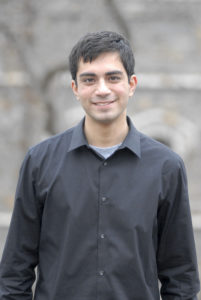
Roshan Giyanani
I’ve been able to describe myself as a photographer for almost two years.
I’d like to think I’m a pretty good one — I’m the photo editor here at The Brown and White, and I have more than a few front pages under my belt.
You’d think, then, that I would have some idea of how to make myself look good in a photo. You’d think I’d know where my hands are supposed to be, the right angle to tilt my face and all of that jazz.
Unfortunately, I don’t. And beyond my awkward positioning, I also don’t photograph well. That headshot up above might be the only decent photo of me from the last two years, but I digress.
There’s no quick and dirty secret to looking good. Poses create superficial change in a photo but don’t alter the moment that is captured. They can make for decent headshots — that’s why your yearbook photo, and my headshot, were so staged. But those are boring, uniform photos. And the best you can do is hope you don’t look bad in them.
Great photos are different.
What sets them apart is they can capture a soul in the two dimensions of a screen or page. This is the reason why it has been said that photography can steal one’s soul. From a certain perspective, they’re right.
There are other ways to describe the soul of a photo, usually as some combination of three special characteristics: a story, emotion and symbolism.
Despite the current controversy over the circumstances of the moment, the famous World War II photo of the kissing sailor and nurse is a perfect example of this. The story represented in the photo is very simple — two lovers reuniting at the end of a war. It captures different emotions: relief, joy and passion. At publication, the photo represented America’s feelings after the war and its subjects could be replaced with thousands of similar couples from all over America.
The story and emotions resonated across the country.
With animals, capturing soul is easy. For instance, dogs are always doing amazing, wonderful and stupid things, and they always show their emotions. When you point a camera at a dog, every picture will warm the Grinch’s heart. That’s a scientific fact.
People are much more difficult. We’re complex. We have hopes and dreams, origin stories and dark secrets. We’re capable of pride and love and fear and strength. And we’re private. We protect — or should I say hide — our emotions from the world.
When someone shows up with a camera, our first instinct is to bury our emotions even deeper. Because of this, moments that tell a story and show those emotions are few and far between, making it incredibly difficult to capture the moment. But it’s incredibly rewarding.
After all, that’s the photo we all want.
The one that shows you at your bravest or kindest or strongest or most beautiful.
The one that captures the way you make someone feel at home or the way you inspire a group of people.
The photo with so much soul that people see our imperfections, acknowledge them and then choose to look straight past them.
The photo that truly does us justice, then, is not found by posing on our “good side” or in evermore ridiculous ways. Don’t blame the pose or yourself for a bad photograph.
Instead, realize it’s because no one has managed to find your story. No one has managed to capture the complexity of your soul with such primitive tools as a camera and lens. Know your soul is too complex to be easily captured.
Take pride in that. You’re a soul in three dimensions.
—
Roshan Giyanani, ’19, is the photo editor for The Brown and White. He can be reached at rsg319@lehigh.edu.





Comment policy
Comments posted to The Brown and White website are reviewed by a moderator before being approved. Incendiary speech or harassing language, including comments targeted at individuals, may be deemed unacceptable and not published. Spam and other soliciting will also be declined.
The Brown and White also reserves the right to not publish entirely anonymous comments.